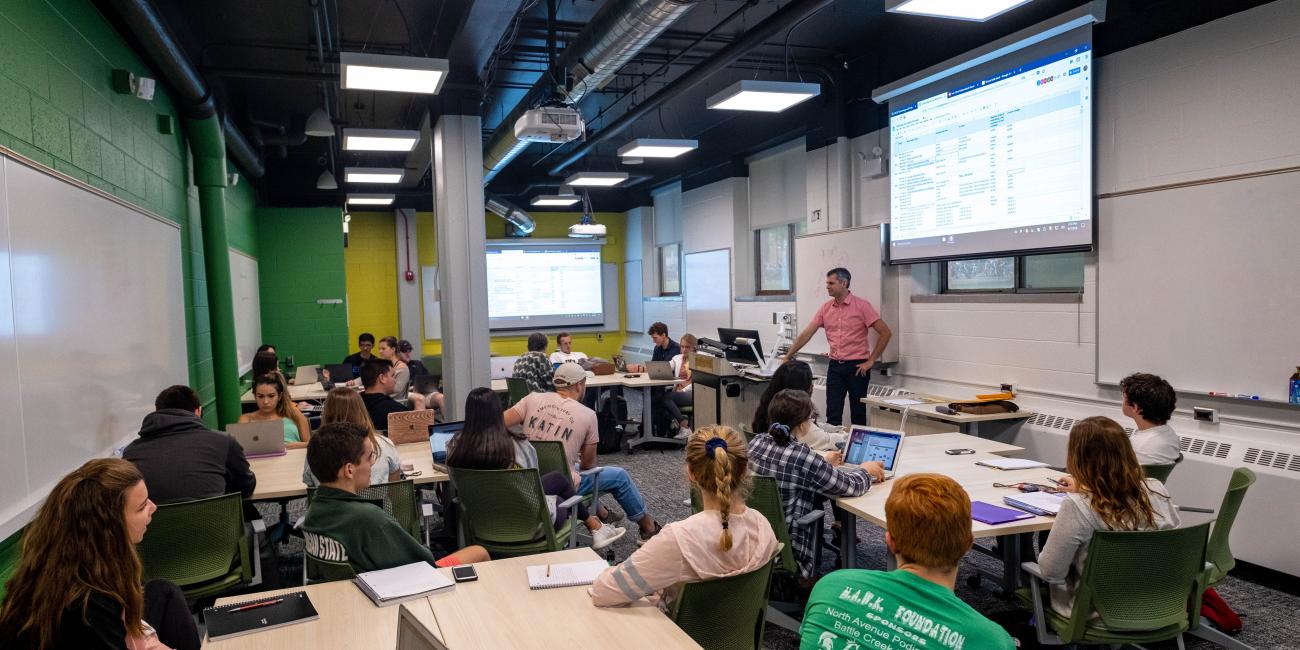Engaging academics in classroom redesign

October 23, 2018
The MSU Classroom Committee is a dedicated team comprised of individuals from IPF, Facilities Planning and Space Management, IT Services and the Registrar’s Office. Working in collaboration with faculty, they create high-impact educational environments that engage students in active learning, and provide opportunities for research, leadership in instructional methods and innovation through technology-rich environments.
The team has created three main types of classrooms on campus. The first is the traditional classroom with rows of seating and projectors at the front. Second, is the enhanced classroom, comprised of projection screens on multiple walls around the room, creating a more collaborative space. Finally, is the REAL (Rooms for Engaged and Active Learning) classroom, with more enhanced technology and collaboration space dependent on the material and curriculum.
Each year approximately 30-40 of MSU’s more than 330 classrooms receive upgrades ranging from technology updates to complete renovations. In 2018, technology-related modifications were completed to classrooms in Biomedical Physical Science, Eli Broad College of Business, Berkey Hall, Chemistry, Engineering and Olds Hall. Painting and new whiteboards were installed in three classrooms in the Communication Arts and Sciences building. Comprehensive renovations (including new furniture, technology, painting, whiteboards, flooring, window treatments, ceilings and lighting) were completed in Case Hall, Communication Arts and Sciences, Engineering, Holmes Hall and Musical Practice.
The project involving Holmes Hall Classroom W5 was especially unique in that members of the Classroom Committee collaborated with faculty and students from the Lyman Briggs College to convert an old underutilized office space in the basement into a new technology classroom. “Our classroom presents some unusual challenges, it is long, narrow and views are interrupted by large, centrally located columns,” said Isaac Record, assistant professor of practice. “As an instructor, it felt good to be a part of the design process for the space, so we could all think through the trade-offs together. Ultimately, the room is much more functional than it might have been if we hadn’t worked together.”
Collaborating with students and faculty created a better design process, helped to better understand their needs and delivered an exciting new learning and teaching environment.
